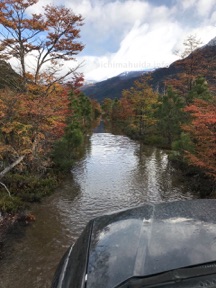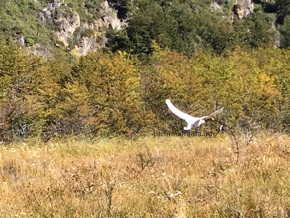
Other types and aspects of restoration
Restoration of wetlands:
-
✴ reference ecosystem - Laguna San Rafael wetland;
-
✴ blocking of drains installed by previous owners;
-
✴ use of tractor to cover drains completely, with small dams for water direction;
-
✴ restoration of peatland: elimination of cattle, of drainage.
-
✴ turning point - removal of livestock;
-
✴ inoculation of moss;
-
✴ sphagnum in the wetlands - valuable for ecosystem and for combating the climate change;
↓
-
✴ refill of wetlands;
-
✴ return of vegetation and wildlife, many birds in wetlands now, especially during the migration period;
A fact: damaged wetlands can be restored in a minimum of 2 human generations (Plos Biology, vol.10, p. e1001248).
Chile has 18 thousand wetlands and only 2% of them have some kind of protection.
National Program for the Conservation
battle against climate change .pdf
What the world needs now to fight
Restoration of time :
-
✴ restoring the time nature needs for regeneration, forest needs time to grow;
-
✴ protect time for Nature to rebuild its own natural processes;
-
✴ assigning high value to time, that’s the time spent on something that gives it value;
-
✴ preserving the momentum of restoring the situation when life had a future;
-
✴ arranging for a long-term (essential) legal protection of the area and of the efforts invested;
-
✴ banning any type of agriculture and tourism;
-
✴ no immediate or short-term results expected, no specific goal to be achieved;
-
✴ preference is given to field long-term observations vs. laboratory experiments. Nature is a poor experimenter, processes evolve slowly;
A fact: In order to have an effect on atmospheric CO2 concentrations, trees must be protected against any kind of degradation, fire, or logging for at least 100 years (UNEP Yearbook 2010).
Some reading: Topsoil storage time.pdf
Use of pines:
-
✴ use of pine plantations as a large wind-breaker (there is always cold wind from the ice field);
-
✴ use as protection for native natural regeneration to create a mixed forest;
-
✴ Ecological thinning technique: some of the pines will be cut and left on the ground, for the vegetation to grow between them, improves the forest and its habitats.
A fact: regeneration of Pinus Pinaster to protect oaks, 7 years results - pine regeneration was more effective in promoting oak survival and establishment than shelters (University of Florence, 2017).
Soil restoration by:
-
✴ reforestation;
-
✴ restoration of dry prairies.
Re-building of deadwood content of the forest.
Restoration of grassland prairies:
A fact: Grassland stony prairies have the highest plant diversity;
A citation: Wes Jackson (Land Institute) : “The prairie, as it was, with all its diversity and grasses, actually produced more carbohydrates and protein per hectare than modern agriculture. But conventional agriculture has not engaged this rich ecosystem on its own terms.”
Roadside restoration →→→
Restoration of respect for nature:
-
✴ no wildlife invasive studies;
-
✴ accepting nature as a guide;
-
✴ no wildlife photography - damaging for wildlife.

01.2018 - November 2019

2019: first sighting of black-necked swans in Project’s wetland
